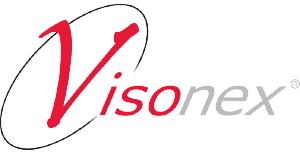Potential Solutions to Common Kidney Transplant Obstacles
A recent study on Improving Access to Kidney Transplantation published in Kidney Me Volume 3, Issue 5 in September/October 2021 Edition, identified barriers as expressed from both Transplant Centers and Dialysis Centers. Pointing out primary concerns such as transportation, healthcare knowledge, multiple comorbid conditions and the importance of education and follow up appeared throughout both center types.
The Advancing American Kidney Health initiative has mandated an increase in the percentage of patients on the transplant waitlist to 30% by 2023 for dialysis facilities. Understanding the challenges identified in the recent study focusing on ESRD Network 6, Visonex created an updated Transplant Workflow which streamlines the workflow for clinicians and allows information to display for a multidisciplinary review and follow up to occur with patients.
A primary barrier for patients, according to both Transplant Centers and Dialysis Facilities who participated in this survey was education. From Admission through Monthly, Quarterly or Annual Assessments Clarity’s Transplant Education documentation, through Transplant Workup to Transplant Waitlist activation assist in monitoring the progress along a successful pathway to transplant. The system does not provide educational materials. However, based on research the most common method
of education is handout or literature. Have you ever noticed what happens with handouts and dialysis patient bags? There may be a better way to provide patients with the necessary education while also tracking the education process at the patient level.
The next concern seemed to vary between Dialysis Facility and Transplant Center. However, they both hold equal concern. Transportation can be difficult for patients depending on how far they are from a transplant center. With gas prices escalating, trips to dialysis and the extra effort to pursuit another visit for follow up can be challenging. Communication also was key beginning with the screening process to understanding current medication conditions that could interfere with the patient’s transplant status. An astounding 25% of communication is still occurring via fax. Phone conversations are the highest method of communication at 57%. Each of these communication modalities requires staff to stop a task at hand to review, organize and document the information in a place where it can be retrieved by team members for updates. As you can imagine, having a single place for communication is crucial to transplant success. This is where the Transplant Workup Form can assist facilities by tracking communication and activity, while automatically incorporating this information into multidisciplinary plans of care.
This solution could provide a single point of clarification for the 48% of facilities included in the survey who indicated they were uncertain of the true transplant status or had no idea of the transplant status.
It is important to have a key member of the interdisciplinary team be the designated transplant coordinator. This provides a gate keeper. In the survey 17% of facilities did not have this person identified. After the information is provided to the transplant
coordinator, the next critical step is inclusion or availability of the information for the entire team. Successful navigation of patients through the transplant process can be difficult. Reach out to Visonex for more information about our transplant tools. We offer various solutions to help organize the process with your team.
